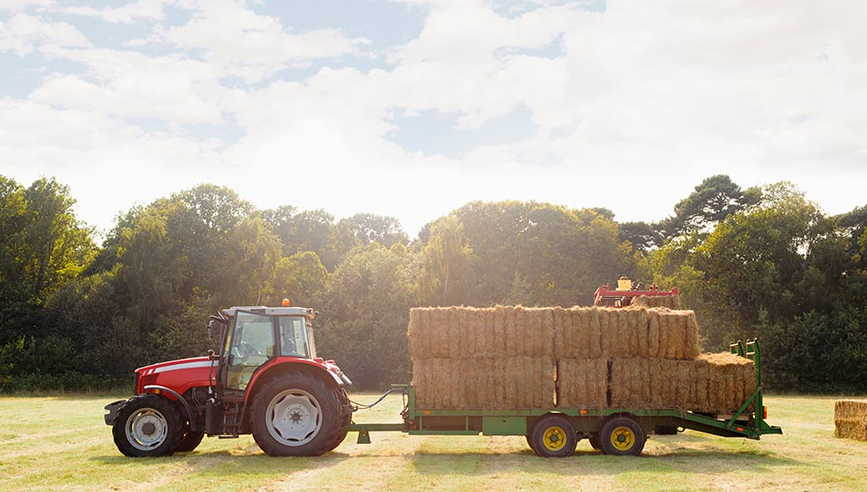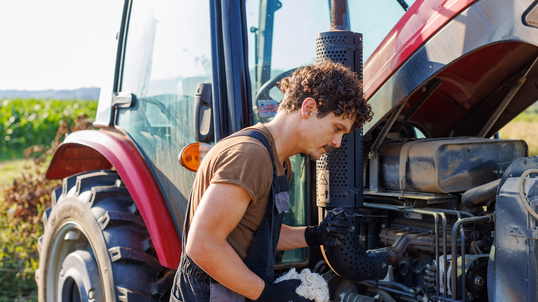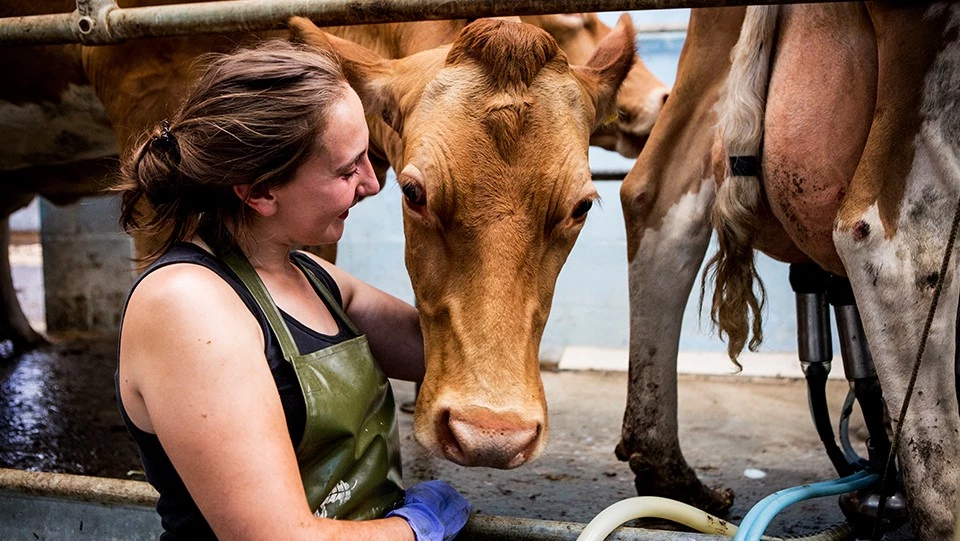How to Help Reduce the Risk of Haystack and Hull Pile Storage Fires


Agricultural commodities stored in bulk share an intrinsic danger when decomposition of organic material generates heat and spontaneously ignites. The risk of stored organic matter catching fire is real. A slowly developing inferno inside a bale can remain hidden from sight until it’s too late.
To help reduce the risk of commodities igniting in storage, consider curing and drying them to reduce moisture content before storing. Then make sure the storage area is protected against exposure to the elements. In most cases, monitoring the core temperature of the commodity is the only way to know when the danger of spontaneous combustion is present.
Why hay bales are susceptible to fire risk
Hay bales are vulnerable to fire risk, especially in the weeks immediately after baling. This is because moisture in the hay can encourage the growth of heat-generating bacteria inside the bales. This type of microbial activity can lead to “hot hay,” which can spark an internal bale fire.
The risk of fire rises when hay is baled at a moisture content of higher than 20%. Even if hay is cured before baling and reaches the appropriate moisture levels, post-baling exposure to precipitation or moisture from the ground can increase the danger of spontaneous combustion.
The risk of combustion is highest within the first six weeks after baling hay. It’s critical to check the bales and take appropriate precautions during that time.
Harvesting and storage best practices can help reduce fire risk
Proper harvesting and storage practices are critical to helping to reduce the risk of fire. Following industry best practices related to controlling the moisture content of the commodity can help to significantly reduce the risk of internal combustion. Adopting bulk storage best practices can help reduce the risk of a fire igniting in a haystack or other organic matter in bulk storage.
Work to reduce the risk of fires: Adopt hay storage best practices
Allow the hay to cure until it reaches a moisture content of 20% or less for small rectangular bales, or 18% or less for large rectangular or circular bales. If possible, plan to bale hay during ideal weather conditions: windy with a relative humidity of 50% or less.
When storing hay bales outside, make sure to protect them from the elements:
- Elevate the bales off the ground.
- Cover them with waterproof material to shield them from rain; you can use pallets, gravel or large rocks.
- Maintain at least 100 feet of clear space between stacks, property lines, fences, structures, roads and railroads. This allows for better air circulation and protects nearby structures in case of fire.
Once hay is stored in bulk, check the hay temperature regularly for up to six weeks after baling. Twice a day, use a probe and thermometer to check the internal temperature of each hay bale. If the core temperature is greater than 175 degrees Fahrenheit, fire is imminent. Call the fire department immediately.1 It’s important to call firefighters because they’re trained to handle hot hay safely and will have the proper equipment, such as charged hose lines, on site if a hay fire occurs.
In addition, watch for signs that indicate the commodity’s core temperature may be rising:
- Steam rising from the stack.
- Unusual odors such as pipe tobacco, caramel, burning or mustiness.
- Moisture buildup on rafters or roofing iron.
- Corrosion on the underside of a tin roof and slumping of hay bales.
Avoid hull fires: Hull storage best practices
Hull piles can also pose a risk of spontaneous combustion with moisture levels playing a role in the process. As with hay bales, proper storage of hull piles can help to reduce the risk of internal combustion fires.
Ideally, store a hull pile on a concrete pad, raised dry surface and/or under a cover to protect the piles from rain. Separate the product to store wetter hulls farthest away from structures and other piles. This allows for adequate air circulation and drier hull piles which helps reduce the risk of fire spreading to other hull piles and structures on the property. Additionally, as with bales, maintain at least 100 feet of clear space between hulls, property lines, fences, structures, roads and railroads. This allows for better air circulation and protects nearby structures in case of fire. More tips for maintaining the piles include:
- Check the piles regularly for moisture and heat, either by manually probing the pile to obtain its temperature or using a thermocouple wire at each auger pole.
- Avoid compacting hull piles. Don't drive over them with a loader or continuously push hull piles upward, as one does when creating a silage pile. This may cause the piles' internal temperatures to rise to risky levels.
- Protect the piles from precipitation.
If a tarp is necessary to protect the piles from precipitation, the color of the tarp can play a role in minimizing temperatures. Consider a white-on-black tarp (with the white side facing out), especially for piles with higher moisture levels. Choosing a lighter tarp color, which reflects rather than absorbs heat, can help prevent temperatures inside the piles from reaching dangerous levels.
Taking these steps can help lower agribusiness fire risks and help prevent losses caused by spontaneous combustion of hay bales and hull piles.
Learn more about how to protect your commodities and operations with agribusiness insurance.
Source
1 https://www.ndsu.edu/agriculture/ag-hub/ag-topics/farm-safety-health/farm-safety/livestock-safety/preventing-hay-fires, North Dakota State University.



